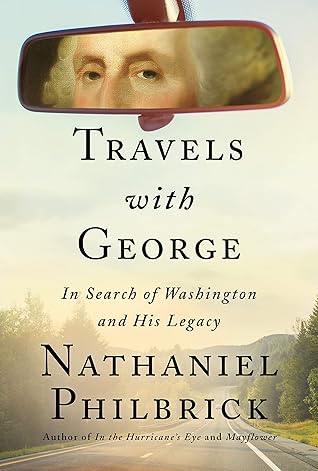More on this book
Community
Kindle Notes & Highlights
Read between
September 14 - September 26, 2021
Washington did not win the war so much as endure an eight-year ordeal that would have destroyed just about anyone else.
From the first, Washington hoped to use the power of his immense popularity to foster a sense of unity and national pride that had not previously existed.
French nobleman Lafayette, who later claimed, “I would never have drawn my sword in the cause of America if I could have conceived that thereby I was founding a land of slavery.”
“The Defender of the Mothers Will Be the Protector of the Daughters.”
To be burdened by the past is bad enough, but to be the first is to feel the full, potentially unbearable weight of the future.
Other than his spy chief, Benjamin Tallmadge, Washington was probably the only person in the United States who knew the identities of everyone involved in the Culper Spy Ring.
(Not until 1939, with the publication of Morton Pennypacker’s General Washington’s Spies on Long Island and in New York, were the spies’ identities revealed for the first time.)
the Constitution’s provision that no laws could be passed against the foreign slave trade for at least twenty years.
Washington’s long-held obsession with the Potomac blinded him to the impropriety of a president’s overseeing the construction of a city in the virtual backyard of his home—a city built with slave labor on land bought and sold by his friends and relatives. Washington didn’t want to be king, but there was a truly monarchical sense of privilege about the making of Washington, D.C.
Congress had determined that a square, ten miles on each side, be set off as the federal district.
This was Washington’s deal: The proprietors would deed to the government all the land the president wished to include within the Federal City. L’Enfant would draw a plan, and the proprietors would receive half the lots from their former holdings and get paid $66.67 an acre for the land where Washington decided to place the governmental buildings.
It seemed kind of ironic that Washington decided to invest in a distillery in 1797 given that his administration had instituted the 1791 tax on spirits that sparked what became known as the Whiskey Rebellion in western Pennsylvania.
Washington assured General New River that under the new constitution the federal government had the sole right to negotiate Indian treaties and that the Catawba had nothing to worry about. But as time would prove, the Catawba were more than justified in their concerns.
But as anyone who knew Washington understood, his only interest was in establishing a federal government that was strong enough to survive without him. If he could use his popularity to forge a durable union, so be it.
For Washington, at least, it was not yet clear that America’s political scene was about to evolve into the combative two-party system we have today.
He spoke of what a pleasure it was to inhabit someone from the eighteenth century. “People back then lived four lives in the time we live one,” he said. “So much of our modern-day lives are lost to screen time, bubble gum of the mind. Back then people actually talked to each other face-to-face; they socialized. It heartens me, walking in their footsteps.
To please both groups, Washington and L’Enfant had had to put a mile and a half between the Capitol and the White House. So that’s one of the reasons why Washington, D.C., is such an expansive city—to please the original landowners. And pleased they were.
According to an account published in 1865, Custis fathered at least forty children by the women he’d enslaved, making him, by standard reckoning, a serial rapist. In the meantime, his legitimate daughter Mary became the bride of the young army officer Robert E. Lee.
It was on to the White House. Washington laid the building’s cornerstone on October 13, 1792. James Hoban, the designer of the South Carolina statehouse in Columbia, was the architect.


